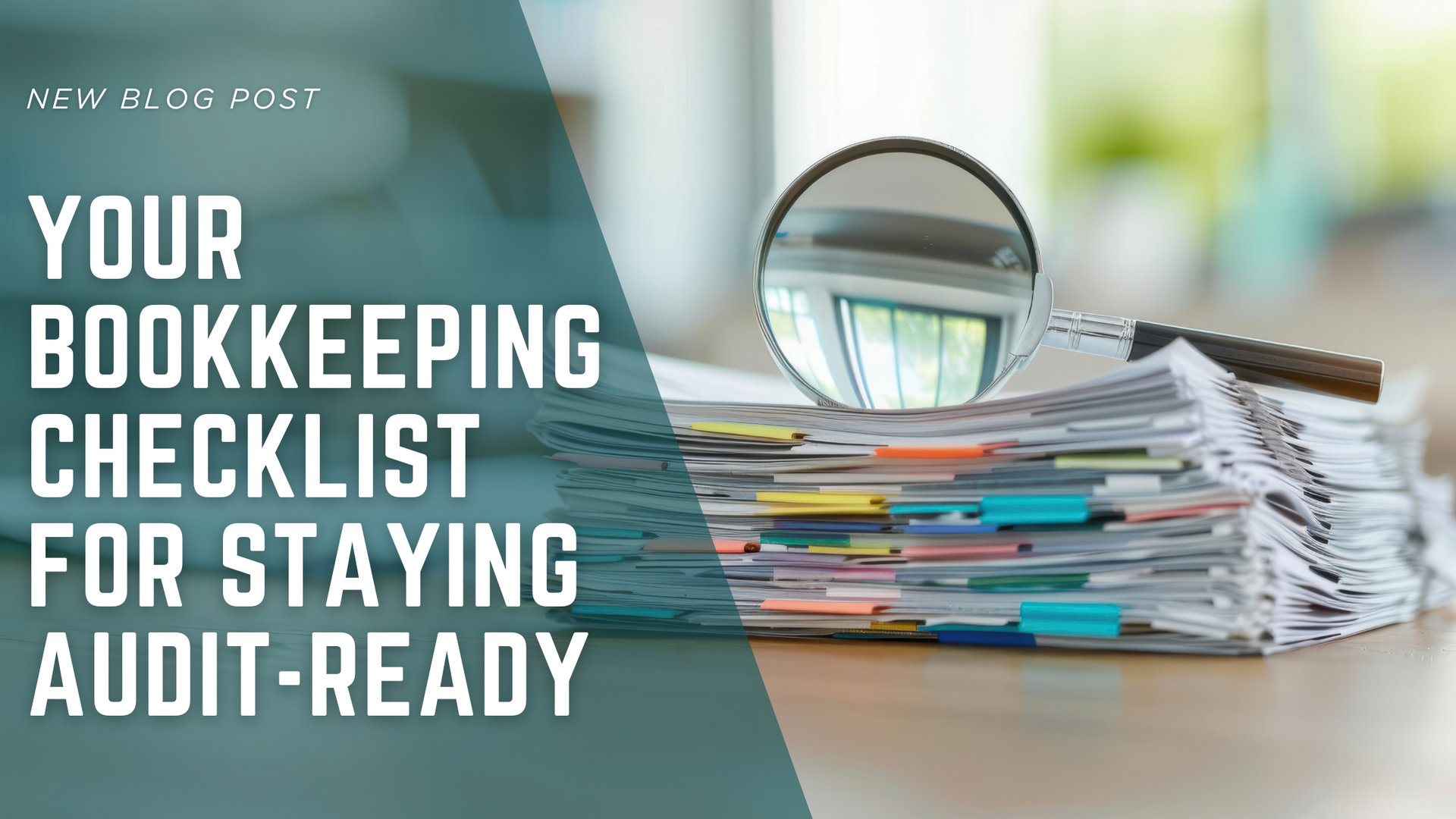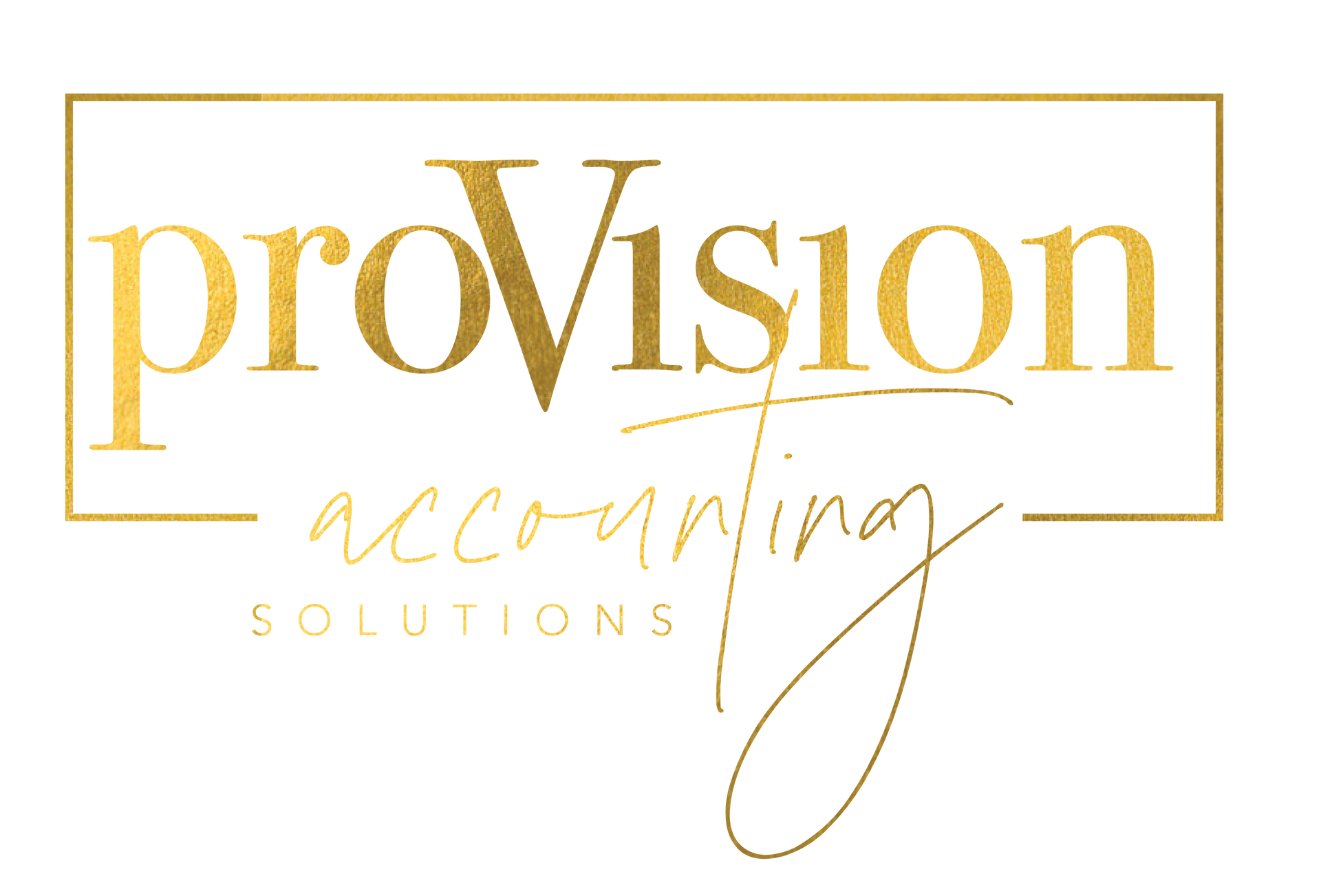Your Road to Financial Relief: Back Taxes Solutions for Business Owners
Getting paid as a business owner isn’t just about transferring money from one account to another.
It’s about making smart decisions that support both your personal finances and your business’s long-term health.

When you’re running your own business, there’s no “biweekly paycheck” magically showing up like when you had a regular job. It’s up to you to decide how, when, and how much to pay yourself.
And if you’ve ever felt unsure about that, you're not alone. Here are some tips on how you can pay yourself the right
way.
1. Start With the Right Business Structure
The way you pay yourself depends largely on how your business is structured:
- Sole Proprietor / Single-Member LLC:
You don’t take a paycheck — you take an owner’s draw, which is money you pull from your business profits. You’ll still pay taxes on the full profit of the business, not just what you draw.
- Partnership:
Similar to sole proprietors, but each partner takes a draw based on their ownership share. Profits and losses pass through to personal tax returns. - S-Corp or C-Corp:
You’re required to pay yourself a reasonable salary through payroll and withhold payroll taxes. You can also take distributions or dividends — but those come after salary and may have tax advantages if done properly.
Why it matters: Choosing the wrong method could trigger IRS red flags or cause cash flow issues in your business.
2. Know What “Reasonable” Means
If you’re an S-Corp owner, the IRS requires you to pay yourself a reasonable salary for the work you do. But what does that actually mean?
Consider:
- Industry averages
- Your role and responsibilities
- Time spent working in the business
- What you’d pay someone else to do your job
If you’re only taking distributions to avoid payroll taxes, that’s a red flag.Balancing salary and distributions properly can save you money and keep you compliant.
3. Separate Business and Personal Finances
Even if you’re a sole proprietor, you should have separate bank accounts for your business and personal expenses.Paying yourself should look like:
- Transferring funds from your business to your personal account
- Logging it properly in your bookkeeping system
- Not swiping your business card for groceries and calling it compensation
This isn’t just good financial hygiene — it helps protect you legally, especially if you're operating as an LLC or corporation.
4. Pay Yourself Consistently
Many owners fall into the trap of only paying themselves when things feel “safe” or when there’s money left over. That’s understandable, but not sustainable.
Set a consistent cadence: weekly, biweekly, or monthly. Treat your compensation like a non-negotiable business expense — just like rent, payroll, or insurance.
Bonus: It helps you create a more accurate budget and forecast for your business because you’re not constantly reacting to what's left in the bank.
5. Don’t Forget Taxes
Whether you’re drawing money or taking a salary, the IRS will expect its share.You need to:
- Set aside a percentage of your income for quarterly estimated taxes
- Track all income and expenses accurately
- Work with an accountant to calculate your tax liability and avoid surprises
Pro tip: A good accountant can help you decide how much to pay yourself, how often, and what to set aside for taxes based on your actual numbers.
6. Use Your Numbers to Adjust
As your business grows, your compensation should reflect that.If you’re consistently profitable, it may be time to:
- Increase your salary or draws
- Start saving for retirement through the business
- Take distributions more strategically
- Reevaluate your business structure
But don’t guess.Use real financial data to guide your decisions—and get support when needed.
Final Thoughts
Paying yourself “the right way” is about more than just getting money into your personal bank account.It’s about:
- Staying compliant with tax laws
- Building a sustainable business model
- Making sure your business supports the life you actually want
If you’re unsure whether you’re paying yourself the right way — or you’ve been avoiding it altogether — it might be time to get a second set of eyes on your books and strategy.
Need clarity on your pay, taxes, or structure? *Use this link
to schedule your free call with me today.
I’ll help you build a system that works for your business and your life.

Growing your trucking business is exciting — there’s nothing like seeing your fleet grow and taking on bigger contracts. But here’s the thing: expanding too fast can actually put your whole business at risk. While growth is important, moving too quickly without the right systems, planning, and financial cushion can lead to headaches — or worse, serious setbacks. Why Growing Too Fast Can Backfire 1. Cash Flow Takes a Hit Adding new trucks and drivers sounds great on paper, but the costs add up fast: fuel, insurance, maintenance, permits, and payroll. If you don’t have enough cash reserves, it’s easy to get stuck scrambling to cover day-to-day expenses. Cash flow isn’t just a number — it’s the lifeline of your business. Expanding without tracking it closely is like driving blind through a busy intersection. 2. Operations Can Get Overwhelmed Your systems might work perfectly for a small fleet, but throw in more trucks and routes, and suddenly scheduling, maintenance, and compliance can spiral out of control. Without proper tools and processes, deliveries get delayed, drivers get frustrated, and customers notice. 3. Quality Can Suffer When your attention is split between managing growth and handling daily operations, service quality can slip. Missed pickups, delayed deliveries, or overlooked safety protocols can hurt your reputation — and in trucking, your reputation is everything. 4. Hiring Mistakes Become Costly Hiring too quickly can lead to mismatched team members, incomplete training, or drivers who don’t fit your company culture. Any of these can lead to inefficiencies, accidents, or turnover — all of which cost time and money. 5. Financial Overstretch Is Risky Many owners take on loans or financing to fund expansion. Debt isn’t inherently bad, but overextending leaves your business vulnerable. If unexpected repairs, fuel spikes, or slow-paying clients hit, that debt can turn from a growth tool into a serious liability. How to Expand Safely Growing your business doesn’t have to be risky — it just needs a smart plan. Here’s how: Plan With Data: Look at your profit margins, cash flow, and current operational capacity before adding trucks or staff. Don’t guess — know your numbers. Scale Gradually: Instead of doubling your fleet overnight, add vehicles and routes in small, manageable steps. Track how each addition affects your finances and operations. Invest in Systems: Scheduling software, maintenance tracking, and accounting tools become even more important as you grow. The right systems help you keep everything running smoothly. Hire Smart, Not Fast: Take the time to onboard and train each driver or staff member properly. A well-trained team prevents mistakes and keeps your business running efficiently. Keep a Cushion: Always maintain a financial buffer to handle unexpected costs. Expansion is exciting, but emergencies will happen — and you want to be ready. Final Thoughts Expanding your trucking business is a milestone worth celebrating, but moving too quickly can create more problems than it solves. Growth needs to be strategic, measured, and supported by strong systems and cash flow . Think of it like a long haul: steady, consistent, and well-planned beats fast and reckless every time. If you’re thinking about adding trucks, drivers, or new routes, take a moment to plan. The right growth strategy protects your business, keeps your team happy, and sets you up for long-term success. A quick review of your operations and finances can show you where to expand confidently — without putting your business at risk. Reserve your spot for a consultation today and learn how to grow your trucking business smartly and safely.

Owning a trucking company takes more than just driving skill — it demands endurance, sharp decision-making, and the ability to juggle a dozen moving parts at once. But while hard work might get your company off the ground, it’s not enough to keep it growing. Many trucking business owners stay stuck in “survival mode,” handling dispatches, payroll, and breakdowns while trying to keep every wheel turning. What’s often missing isn’t effort — it’s the mindset shift from being the boss to being the CEO.

Every trucker knows the feeling — watching the fuel gauge drop while thinking about how much that tank just cost. For most trucking businesses, fuel is one of the largest and most unpredictable expenses . When prices rise or routes get inefficient, your profits take a direct hit. But here’s the truth: you can’t control fuel prices, but you can control your fuel strategy. The difference between a business that struggles with fuel costs and one that manages them effectively often comes down to simple habits, smart tracking, and better planning. Let’s talk about how to keep more of your hard-earned money in your pocket — not in the pump. 1. Know Your True Fuel Costs Most trucking business owners track what they spend on fuel — but not what it actually costs them. Your true fuel cost includes: The price per gallon Route efficiency Idle time Empty miles Driver habits When you calculate your cost per mile (including fuel), you start seeing where money is leaking out. A few cents per mile may not sound like much, but over thousands of miles, it adds up fast. 2. Cut Idle Time Idling is one of the biggest silent profit-killers in trucking. An idling truck burns roughly half a gallon of fuel per hour — and that’s money literally going up in smoke. Encourage your drivers to reduce idle time when waiting for loads, during breaks, or at stops. Investing in auxiliary power units or idle-reduction technology can pay for itself quickly in savings. 3. Plan Smarter Routes Routing inefficiencies can waste hundreds of dollars a week. Use route-planning software or apps that identify: The shortest or most fuel-efficient routes Traffic patterns that cause delays and wasted fuel Fuel stops with better pricing along the way Even shaving a few unnecessary miles off each trip can make a noticeable difference to your bottom line. 4. Stay on Top of Maintenance A poorly maintained truck burns more fuel — it’s that simple. Regular maintenance helps you catch small issues before they turn into expensive repairs or fuel inefficiencies. Keep an eye on: Tire pressure Air filters Fuel injectors Engine oil and cooling systems When your trucks run smoothly, they run efficiently — and that means more money saved. 5. Track and Analyze Fuel Data If you’re not tracking fuel usage, you’re missing valuable insights. Use fuel management software or integrate it with your accounting system to monitor trends. Ask questions like: Which routes burn the most fuel? Which trucks or drivers are less fuel-efficient? Are there specific lanes where fuel costs spike? Data turns guesswork into strategy — and strategy into profit. 6. Negotiate and Leverage Discounts Many fuel cards and programs offer rebates, discounts, or partnerships that can help you save per gallon. If you run multiple trucks, those small savings multiply quickly. Look for programs that fit your routes and fleet size, and make sure your drivers know how to use them properly. 7. Build Fuel Costs Into Your Pricing One of the biggest mistakes trucking business owners make is underpricing loads without considering fuel fluctuations. Make sure your rates reflect real operating costs — including your average fuel spend. This ensures that rising fuel prices don’t quietly erase your profit margin. 8. Get Financial Clarity Fuel costs are just one part of your bigger financial picture. If you’re not monitoring cash flow, expenses, and profit margins consistently, it’s easy to lose sight of how fuel impacts your bottom line. Working with a trucking-savvy accountant helps you spot trends, plan for volatility, and keep your operations profitable even when fuel prices spike. Final Thoughts Fuel will always be one of your biggest expenses — but it doesn’t have to drain your profits. With the right tracking, maintenance, and financial planning, you can turn fuel management into a competitive advantage instead of a constant headache. Still need help figuring out exactly where your money is going? Let’s review your numbers and create a financial plan that puts you back in the driver’s seat. Schedule your call today to see how strategic accounting can help your trucking business stay profitable mile after mile.

A few months ago, a fleet owner named Marcus called feeling burned out. He was spending his days juggling dispatch calls, payroll, maintenance schedules, and late-night paperwork. He told me, “I started this business to grow a fleet, not to drown in admin work.” But like many trucking business owners, Marcus was afraid to outsource — he thought it meant losing control. After taking the leap and outsourcing his bookkeeping and compliance management, something surprising happened: Marcus didn’t lose control. He gained it. With clear reports, organized systems, and more time to focus on drivers and clients, his business started running smoother than ever. Running a trucking company is no small feat. Between managing drivers, keeping up with compliance, handling customer relationships, and tracking every dollar, it’s easy to feel stretched thin. That’s why more and more trucking business owners are turning to outsourcing — delegating specific tasks to professionals or service providers so they can focus on growth. But there’s one concern that often stops owners in their tracks: “If I outsource, will I lose control of my business?” The good news? You can absolutely outsource and still stay firmly in the driver’s seat. Here’s how to do it the right way. 1. Start with the Right Mindset Outsourcing isn’t about giving up control — it’s about taking control of your time and focusing on the areas that matter most. Instead of trying to do everything yourself, outsourcing allows you to run your company like a true CEO. You’re still making the strategic decisions, you’re just not buried in the day-to-day grind. 2. Know What to Outsource (and What to Keep In-House) Not every task should be outsourced. The key is to offload the time-consuming, repetitive, or specialized work that takes you away from running your business. Common areas trucking companies outsource include: Accounting and bookkeeping: Keep your finances clean, compliant, and ready for tax season. Dispatching: Free up your schedule while still maintaining control over load decisions. Payroll: Ensure your drivers and contractors are paid accurately and on time. Safety and compliance: Stay current with DOT regulations without constantly chasing paperwork. Maintenance tracking: Use third-party systems to manage repairs and inspections more efficiently. Keep your core business functions — like building client relationships and making growth decisions — in-house. That’s where your leadership matters most. 3. Choose the Right Partners The people or companies you outsource should act as an extension of your team, not just a vendor. Before hiring, do your homework: Check industry experience Ask for references or case studies Review their communication and reporting process Confirm data security and confidentiality policies Trust is earned through transparency. Choose partners who value collaboration and clear communication. 4. Set Clear Expectations and Metrics Outsourcing works best when everyone knows what success looks like. Establish clear expectations from the start: What tasks are being outsourced? What’s the expected turnaround time? How will performance be measured? Regularly review reports and updates so you’re never out of the loop. This keeps accountability in place while allowing you to delegate confidently. 5. Use Technology to Stay Connected The right systems can help you monitor everything in real time — without micromanaging. Use digital tools to: Track financial reports and invoices Review dispatch updates or delivery statuses Communicate quickly with your outsourced team When everything is organized and accessible, you stay in control — even if you’re not doing the work yourself. 6. Keep the Final Decision-Making Power Outsourcing doesn’t mean surrendering authority. You can delegate execution while keeping decision-making in-house. For example: Your accountant handles the books, but you approve major financial decisions. Your dispatcher finds loads, but you decide which ones to accept. Your compliance partner monitors safety files, but you decide how to handle violations. You stay in control of the strategy — they handle the details. 7. Review and Adjust Regularly Think of outsourcing as a business relationship that evolves. Schedule regular check-ins, review reports, and discuss ways to improve efficiency or service. If something isn’t working, don’t hesitate to make changes. Your business needs will shift — and your outsourcing strategy should grow with you. Final Thoughts When done right, outsourcing isn’t about losing control, it’s about gaining leverage. You free up your time, improve efficiency, and make room for better decision-making. The key is to build strong systems, choose trustworthy partners, and stay engaged in the process. You’ll be surprised how much smoother your operation runs when you’re focused on leading — not juggling every detail. Worried about losing control of your books? Let’s make sure your finances stay accurate, transparent, and in your hands, even when you outsource. 👉 Schedule a call today to learn how professional accounting support can keep your trucking business on the road to profit.

When you’re running a trucking business, your focus is usually on keeping the wheels turning, meeting delivery deadlines, and managing expenses. But behind the scenes, taxes play a huge role in whether your business runs smoothly or hits roadblocks. One area that often causes confusion is the difference between state and federal tax obligations. Both matter—but in different ways. Missing one could mean penalties, interest, or even unexpected audits. Let’s break it down in plain English.

As a business owner, you’re constantly making decisions that impact your bottom line. Some of these choices are small — buying office supplies, adding a new tool, or paying for a short-term marketing campaign. But others come with a bigger price tag and much higher stakes. Maybe it’s a new truck for your fleet, upgraded equipment for your shop, or software that promises to save hours each week. These major purchases can be exciting, but they can also be dangerous if made without a full understanding of the financial impact. A purchase that seems like a step forward can quickly turn into a financial burden if it drains your cash flow or doesn’t deliver the return you expected. Before you commit, it’s worth slowing down and walking through a few key considerations.

As a business owner, the people you hire are the backbone of your operations. But before you bring someone on board, you have to decide how you’ll classify them — as a W-2 employee or a 1099 independent contractor. This decision is more than a paperwork choice. It impacts your payroll taxes, legal responsibilities, costs, and even how much control you have over the work being done. Misclassifying workers can lead to IRS penalties, back taxes, and headaches you don’t want. Here’s what you need to know before you decide. Understand the Relationship You’re Creating The classification comes down to the level of control you have and how integrated the worker is into your business. W-2 employees are part of your core team. You set their hours, assign tasks, decide where they work, and often provide tools, software, or equipment. You also handle payroll taxes, unemployment insurance, and must comply with labor laws. 1099 contractors operate like their own business. They set their own schedules, use their own tools, and determine how they complete the work. You pay them based on invoices, and they handle their own tax obligations without receiving benefits from you. If you’re directing the process step-by-step, the role likely leans W-2. If you’re only concerned with the outcome, it’s more in 1099 territory. Weigh the Financial and Legal Responsibilities The cost difference between W-2 and 1099 is about more than just pay rates. W-2 employees require you to cover payroll taxes, potential overtime, benefits like health insurance or retirement plans, and possibly training expenses. You’ll also be responsible for meeting compliance standards, such as wage laws and workers’ compensation coverage. 1099 contractors are typically paid only for the agreed work and handle their own business expenses, taxes, and insurance. While you may avoid many overhead costs, their hourly or project rates are often higher to account for the lack of benefits. Be aware: Misclassification can result in IRS reclassification, leading to back taxes, interest, and fines. Consider the Duration and Purpose of the Role The length of time you expect to work with someone can help guide your decision. Short-term or specialized projects — such as a website redesign, seasonal marketing push, or consulting engagement — are often better suited for contractors. Ongoing, year-round work that’s essential to daily operations — like administrative support, customer service, or a full-time production role — is more aligned with employee status. If someone is doing the same work as your other employees, using your resources, and showing up daily, chances are they’re really a W-2. Check the Rules Before You Decide Compliance isn’t just a federal matter — your state’s laws may be even stricter. The IRS uses factors like behavioral control, financial control, and the nature of the relationship to determine classification. Some states apply the ABC Test, which makes it harder to classify workers as contractors unless they clearly meet specific independence criteria. Review the guidelines before finalizing your choice or consult with a CPA or employment attorney to be safe. Which Will You Decide? Choosing between W-2 and 1099 isn’t just about what’s cheaper or more convenient — it’s about what’s legally correct and sustainable for your business. Getting it right protects you from costly penalties and builds trust with the people you hire. If you’re unsure, it’s worth getting professional advice upfront. It’s a small investment compared to the cost of fixing a misclassification later.

When you hear the word “audit,” you might picture piles of paperwork, frantic document searches, and sleepless nights wondering if your records are complete. The truth? An audit doesn’t have to be a nightmare — but only if you’ve been preparing for it all along. Good bookkeeping isn’t just about tracking income and expenses for tax season. It’s about creating a clear, accurate, and organized record of your financial activity so you can confidently show your numbers to anyone — whether it’s your accountant, the IRS, or a potential investor. If you want to stay audit-ready year-round, here’s your essential bookkeeping checklist:

The truth is, plenty of businesses go under because they didn’t understand the difference between profit and cash flow. One tells you whether your business is truly earning, the other tells you whether you can actually pay your bills. Mix them up, and you could be headed for a financial blind spot that’s hard to recover from. What Is Profit? Profit is what’s left after you subtract all your expenses from your revenue. It’s the money your business actually earns after covering operating costs. Gross profit = revenue minus the cost of goods sold (or cost per mile in trucking). Net profit = what’s left after all expenses, including overhead, taxes, and interest. Example: If your trucking company earns $50,000 in a month and your expenses are $35,000, your profit is $15,000. Why it matters: Profit shows if your business model is working. If you’re not profitable long term, you can’t sustain the business without constant infusions of cash or credit. What Is Cash Flow? Cash flow measures the actual movement of money in and out of your business during a specific period. It’s about timing — when you get paid vs. when you have to pay others. Positive cash flow = more money coming in than going out. Negative cash flow = more money going out than coming in. Example: Your business may be profitable for the quarter, but if customers take 60 days to pay and your bills are due in 30 days, you might face a cash shortage even though you’re profitable on paper. Why it matters: Good cash flow management ensures you can pay bills, handle payroll, and cover unexpected expenses without panic. Key Differences Between Cash Flow and Profit:

Financially confident business owners aren’t immune to challenges, but they make decisions from a place of clarity, not panic. They know how much money is coming in, how much is going out, and how to protect their cash flow no matter what the market does. Instead of reacting to every dip or crisis, they plan ahead, keep control of their numbers, and use their money as a tool to grow — not just to get by. Financial confidence isn’t about luck, hitting a big contract, or magically “knowing” how to manage money. It’s about developing consistent habits that keep you in control of your finances year-round. Whether you’re just starting out or you’ve been in business for years, adopting these habits will not only help your bottom line, but give you peace of mind. Here are the five habits financially confident business owners live by, and how you can start practicing them today. 1. They Have a Cash Flow Game Plan Financially confident owners know exactly when money is coming in and when it’s going out, so they can make proactive decisions instead of scrambling. They: Forecast income and expenses for the year so they can prepare for seasonal highs and lows. Track cash flow weekly instead of waiting until the end of the month to see if they’re short. Set spending limits based on real-time numbers, so every expense is intentional. This habit keeps them from being blindsided by slow weeks or large, unexpected bills. 2. They Pay Themselves a Set Amount Rather than pulling money from the business account whenever they need it, confident owners set a regular pay schedule. They're usually: Transferring a consistent salary into personal accounts so household expenses are predictable. Preventing business funds from being drained by unexpected personal purchases. Making tax planning easier because income is clearly defined instead of fluctuating wildly. This turns the business into a reliable employer for themselves, not an ATM. 3. They Keep Debt Strategic, Not Emotional Financially confident owners see debt as a tool to grow their business, not as a lifeline for poor planning. They: Borrow for investments that generate revenue, like equipment, expansion, or marketing campaigns with a proven ROI. Avoid high-interest credit cards for day-to-day expenses, knowing it can erode profits. Have a clear payoff strategy before borrowing, so repayment doesn’t choke cash flow later. They use debt with discipline, and they know exactly how it will pay them back. 4. They Track Profit, Not Just Revenue Big sales numbers mean nothing if expenses eat it all up. Financially confident owners focus on what they actually keep. They: Monitor profit margins regularly to ensure they’re pricing products or services correctly. Watch their cost of goods sold or cost per mile to identify where money leaks are happening. Trim unnecessary expenses and reallocate funds to higher-return areas. They understand that sustainable growth comes from healthy profits, not inflated sales figures. 5. They Review and Adjust Regularly Financially confident owners know the business landscape is always shifting. They don’t “set and forget” their financial strategy. They: Review monthly financial reports to compare actual performance to budgeted goals. Adjust pricing, spending, or marketing efforts when numbers show a dip or a growth opportunity. Use metrics to guide decisions, not gut feelings or guesswork. This constant review keeps them ahead of problems and positions them to act quickly on new opportunities. Secure Your Confidence Financial confidence is a skill, not a personality trait. The more you track, plan, and prepare, the more control you’ll feel over your business. Start by mastering one of these habits this month, then build from there — your business and your stress levels will thank you. Ready to gain more control and confidence in your finances? Book your consultation here and start building strong financial habits today.
